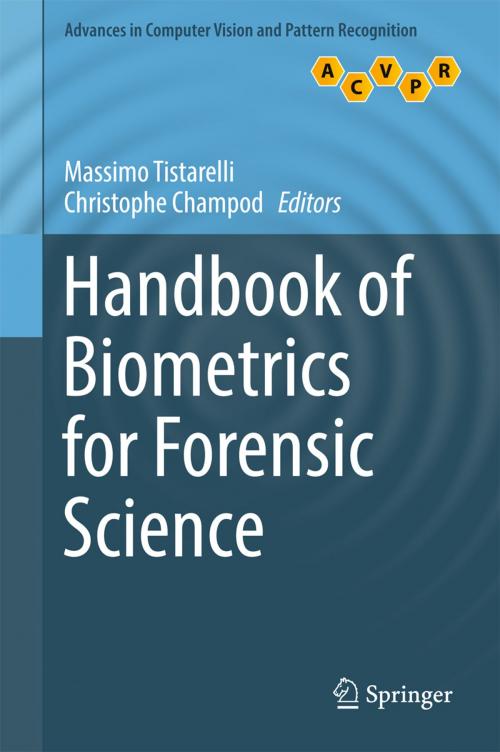Handbook of Biometrics for Forensic Science
Nonfiction, Computers, Advanced Computing, Engineering, Computer Vision, Health & Well Being, Medical, Specialties, Forensic Medicine, General Computing| Author: | ISBN: | 9783319506739 | |
| Publisher: | Springer International Publishing | Publication: | February 1, 2017 |
| Imprint: | Springer | Language: | English |
| Author: | |
| ISBN: | 9783319506739 |
| Publisher: | Springer International Publishing |
| Publication: | February 1, 2017 |
| Imprint: | Springer |
| Language: | English |
This comprehensive handbook addresses the sophisticated forensic threats and challenges that have arisen in the modern digital age, and reviews the new computing solutions that have been proposed to tackle them. These include identity-related scenarios which cannot be solved with traditional approaches, such as attacks on security systems and the identification of abnormal/dangerous behaviors from remote cameras. Features: provides an in-depth analysis of the state of the art, together with a broad review of the available technologies and their potential applications; discusses potential future developments in the adoption of advanced technologies for the automated or semi-automated analysis of forensic traces; presents a particular focus on the acquisition and processing of data from real-world forensic cases; offers an holistic perspective, integrating work from different research institutions and combining viewpoints from both biometric technologies and forensic science.
This comprehensive handbook addresses the sophisticated forensic threats and challenges that have arisen in the modern digital age, and reviews the new computing solutions that have been proposed to tackle them. These include identity-related scenarios which cannot be solved with traditional approaches, such as attacks on security systems and the identification of abnormal/dangerous behaviors from remote cameras. Features: provides an in-depth analysis of the state of the art, together with a broad review of the available technologies and their potential applications; discusses potential future developments in the adoption of advanced technologies for the automated or semi-automated analysis of forensic traces; presents a particular focus on the acquisition and processing of data from real-world forensic cases; offers an holistic perspective, integrating work from different research institutions and combining viewpoints from both biometric technologies and forensic science.















